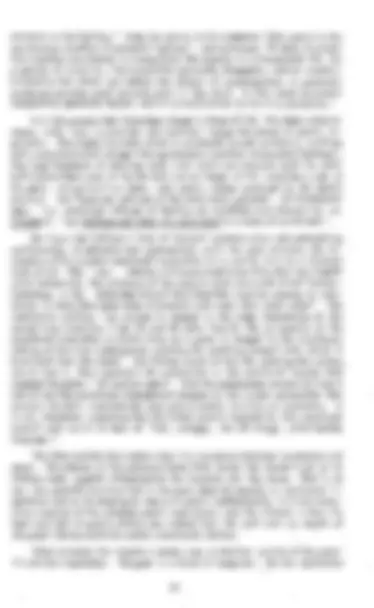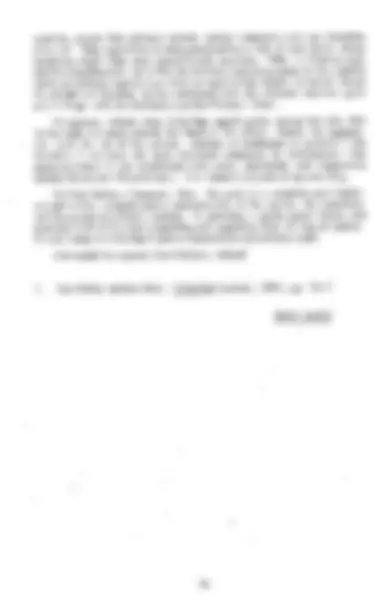




Study with the several resources on Docsity

Earn points by helping other students or get them with a premium plan


Prepare for your exams
Study with the several resources on Docsity

Earn points to download
Earn points by helping other students or get them with a premium plan
Community
Ask the community for help and clear up your study doubts
Discover the best universities in your country according to Docsity users
Free resources
Download our free guides on studying techniques, anxiety management strategies, and thesis advice from Docsity tutors
The debate surrounding coleridge's poem 'kubla khan.' while some believe it to be an unfinished fragment, others argue it is a romantic manifesto. The structure of the poem, its connection to coleridge's imagination and the creative process, and its poetic significance.
What you will learn
Typology: Lecture notes
1 / 4

This page cannot be seen from the preview
Don't miss anything!



Everybody knows Coleridge's story, in the preface to its publication in 1816, of how he allegedty wrote Kubla Khan, and everyone knows how Pro- fessor Livingstone Lowes has shown, in his book The road to Xanadu, how he believes the poem happened.
Personally, I consider Coleridge's story a literary hoax. 1 cannot be- lieve that Kubla Khan is a fragment, interrupted and unfinished. I believe if to be rather a Romantic manifesto, the poetic equivalent and anticipation of Wordsworth's famous Preface to the second edition of Lyrical Ballads. (The poem was written in November 1797, but not published until 1816.) The full title of the poem reads : Kubla Khan, or A vision in a dream; A fragment. The alternative title gives us the key to the structure of the poem. Tie dream occupies the first 36 lines; next follows the vision (the word occurs in line 38); then comes the synthesis of these two in the poem's final state- ment.
The dream is divided into three sections, which mirror the characteristic shiftings and recurrences of the world of dream.
The first section, of 11 lines, provides the introductory setting. We are in Shang-tu, a province of Tartary. Kubla Khan, grandson of Genghis Khan, and Emperor of China in the 13th century, has commanded a stately palace to be built ma splendid landscape of forests and gardens and lawns. All is light and air, beauty and fertility. Except for one dark note. Through the demesne runs a sacred river, which flows under the ground by way of fathom- less caves to a sunless sea.
The second section, of 19 lines, traces this river to its source. It bursts from the ground in a deep chasm that slants across the hillside, and it gushes out ceaselessly, throwing up huge fragments of rock. Then it pursues a leisurely course for five miles through the forest and the parkland, until it disappears with a mighty roar into the underground caves; its tumult sounds to the Emperor like the voices of his ancestors, prophesying war.
The third section, of 6 lines, at once recapitulates and focuses the palace and-its setting are presented in a bird's-eye view. But they are also presented as an object of wonder.
Abyssinian girl accompanying herself on - a musical instrument as she sings.
The final 13 lines then synthesize dream and vision, and offer us a pro- found statement of the nature of Romantic inspiration and its creativepro- cesses. -
In interpreting the poetic significance of all this, let us first link Shang- tu with Abyssinia. To Coleridge's Romantic imagination these were both re- mote and strange places, Wordsworth's "far-off things". They thus unify and harmonize the dream and the vision. Note, too, that there is an echo of The
Solitary Reaper in the picture of the Abyssinian maid; they are both alone and singing, but whereas the Highland girl is performing manual farm labour, this one is practising the art of instrumental music. Wordsworth's concern is to evoke an emotional atmosphere in a setting of simple rural life; Coleridge's is to embody his deepest artistic tenets.
For the sacred river AIph (the epithet is used three times) is an image of the F low of divine inspiration; the unfathomed caves are those of man's artistic potential, and the sunless sea is the mysterious underground reservoir of creat- ive talent. Kubla's demesne is the domain of poetry, a world of colour and light and beauly, within which the poet holds powerful sway, and where, like Kubla, he can erect magnificent and wonderful structures, each "a miracle of rare device".
Part of Coleridge's Romantic creed is that poetry should be evocative, that it should suggest as well as state. Hence "twice five", at once vaguer than "ten" and suggestive of a number greater than this precisely fixed one. Coleridge is also a careful poetic craftsman, a confirmed believer, like Spenser, Keats, and Tennyson, in the poetic importance of sound values and rhythm; hence the subtle interplay of echoes in
Twice five miles of fertile ground With walls and towers were girdled round.... Five miles meandering with a mazy motion... In Xanadu did Kubla Khan... But to return. The first five lines of the second section go on to image the importance of the imagination in colouring experience; as Wordsworth says, "to throw over them a certain colouring of imagination". Coleridge indicates some of the kinds of subjects that are attractive to the Romantic spirit: a deep romantic chasm, a green hillside, a grove of splendid trees, wild and haunted spots, moonlight, errchantments, a wailing woman, a demon-lover; and that significant phrase "holy and enchanted" forges a verbal link with "sacred" in line 3 and with "holy dread" in line 52. Note also that the evocation of the strange, remote,emotional drama of the world of balladry is an echo of Wordsworth's "old, unhappy, far-off things", as well as being a reminder that the Romantic creed has a long poetic history. Next, Coleridge takes us to explore the source and the process of poetic inspiration and artistic creation. "All good poetry," writes Wordsworth, "is the spontaneous overflow of powerful feelings." This is the origin of the poetic impulse; but "our continued influxes of feeling are modified and direct- ed by our thoughts, which are indeed the representatives of all our past feel- ings". The Lyrical Ballads, he says, were written with a purpose, which is principally to illustrate the manner in which our feelings and ideas are associated in a state of excitement,.. .to follow the fluxes and ref luxes of the mind when agitated by the grect and simple affections of our nature." Before long he mentions "one other circumstance which distinguishes these poems from the popular poetry of the day; it is this, that the feeling therein de- veloped gives importance to the action and situation, and not the action and
creative powers that ordinary mortals cannot understand and are therefore afraid of. They regard him as being possessed by a kind of mad devil, whose mysterious magic they must superstitiously exorcize. With his flashing eyes and his streaming hair, he is like the divinely inspired prophets of old, against whom we ordinary mortals must close our eyes in holy dread, for he has tasted the delights of Paradise, he has communed with the ultimate creative spirit of all things, with the Shelleyan and the Platonic "One".
So supreme, indeed, does Coleridge regard poetry among the arts, that he has made this poem embody the ideals of the others. Poetry, he suggests, can rival the art of the painter, whether in landscapes or portraits ( the damsel ); it can have the some structural coherence as architecture ( the pleasure dome); it can reverberate with tonal, emotional, and imaginative echoes like music (the dulcimer), It is indeed a miracle of rare devising.
Far from being a fragment, then, the poem is a complete and highly- wrought entity, a superb poetic representation of the source, the materials, and the process of artistic creation. It embodies a whole poetic theory and practice in 54 of the most compelling and appealing lines of English poetry. It is an image of Coleridge's poetic Romanticism and artistic creed.
Interrupted by a person from Porlock, indeed
See Walter Jackson Bate Coleridge (London, 1969), pp. 76-7.